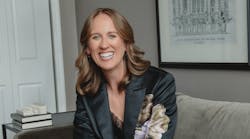NOLN planned in 2019 to write a story about best practices in borrowing. Like most everything else, the pandemic came unexpectedly and required plans to be changed and adapted. For this story, it became clearer than ever that loans and borrowing aren’t done in a vacuum. According to Troy Jones, a certified financial planner at Access Financial Resources in Oklahoma City, there are many outside forces that influence the timing and strategy of borrowing money for your business. And having multiple borrowing options is an important tool.
Jones specializes in helping small business owners, many of whom have around 15 employees. He said that one thing to keep in mind is that, no matter the borrowing option, the most bottom-line factor is your capacity to repay.
“One’s ability to pay,” he says. “And that has to do with cash flow. And in my opinion, pretty much everything from an investment standpoint comes back to cash flow.”
This article explores four big considerations for borrowing that can apply at any time but are at the forefront in times like these.
1) Get your house in order.
The bottom line for borrowing is to anticipate your ability to pay off the loan. Make sure it’s the business providing repayment and not your personal finances. Many of Jones’ small business owner-clients mingle the two pots of money, and he counsels them to separate them.
“They've got their business cash flow and they've got their personal cash flow,” he says. “And what we try to do is get them to identify each of those separately and also in preparation, especially with people within five years of retiring.”
When forecasting your repayment plan, Jones says that owners should take care to make best-case and worst-case scenario forecasts.
“I’d say they should test the tolerance on that to say, ‘What if our income didn’t go up that much?’” he says. “And what if you’re buying that piece of equipment just to stay even rather than go down?”
That involves looking at the headwinds and tailwinds of the industry and considering whether it’s going to be a time of consistent revenues.
“Do you really want to owe money?” Jones says. “And if you're the shop that owes money, how competitive are you going to be against the shop that doesn’t?”
2) Study outside influences.
When Jones is working with clients to make plans for the life of a loan, he encourages them to look at headwinds and tailwinds. That means taking a look at the larger industry forces and how that might affect your ability to be competitive while servicing debt.
“If we’re borrowing money in a growing economic environment, then it’s easier to pay it back,” Jones says. “Because if your debt is a fixed cost, and your revenues are increasing, then the debt becomes a smaller percentage of the total.”
For quick lubes, the factors that Jones would consider echo those issues that have been on the industry’s mind for years. He might take a look at federal driving data and consider trends in vehicle ownership and electrification.
“The average miles driven is flattening out and the plugin and hybrid sales are ramping up,” he says.
3) Consider alternative funding sources.
In times when a traditional, long-term loan might not be the best route, there are alternative forms of borrowing that might be able to bridge the need gap.
One of the most common for businesses is a line of credit. Once set up, this allows for quick, accessible funds that can be withdrawn in parts.
Jones said that owners should pay attention to the fees a lender might charge for the credit line even if it isn’t used. Interest rates can also be a bit higher on credit lines.
Owners can also borrow against retirement accounts. Congress relaxed some of the rules around this strategy as part of the CARES Act, which was one of the aid bills passed in response to coronavirus.
For expenses related to the effects of the virus, borrowers can take out up to $100,000 without the standard 10 percent penalty. This applies to individual retirement accounts and annuities (IRAs), qualified pension, profit-sharing, or stock bonus plans (including 401(k) plans), qualified 403(a) annuity plans, 403(b) annuity contracts and custodial accounts and governmental section 457 deferred compensation plans. That program lasts through 2020.
For these alternative sources, Jones says that it should be predicated on the returns being all but guaranteed to beat the gains made if those investment accounts were left alone.
“If you could get a guaranteed 4-percent return on your investment, that is really desirable right now,” he says.
4) Shop around.
Shopping around often means placing attention on interest rates, but Jones says that shouldn’t be the No. 1 consideration. Banks might have some fine print that makes an attractive interest rate less desirable over time.
One additional cost to consider is the requirement of additional insurance.
“One of the things that is often the case in business loans with banks is they require insurance—life insurance,” Jones says. “Some of them require disability insurance.”
Owners might be better off shopping for that insurance separately rather than taking the plan offered by the lender.
Finally, when shopping around, consider that the best bank might be more important than the best deal. Jones says it makes a huge difference when there’s a stable business relationship.
“I would prefer to use a local bank or a credit union,” he says. “Usually you're going to end up knowing who you're talking to and they have a more invested interest in the community.”





